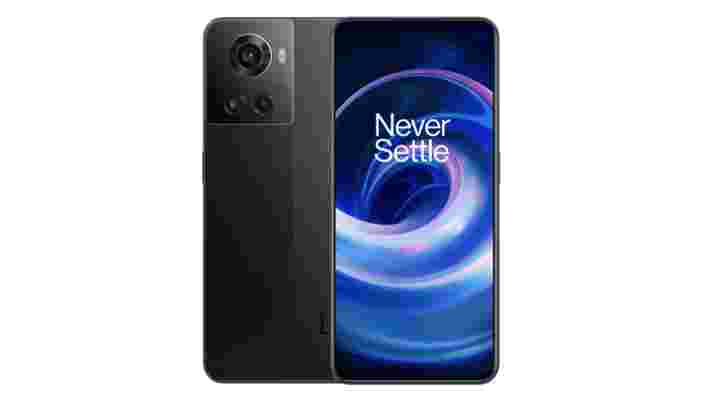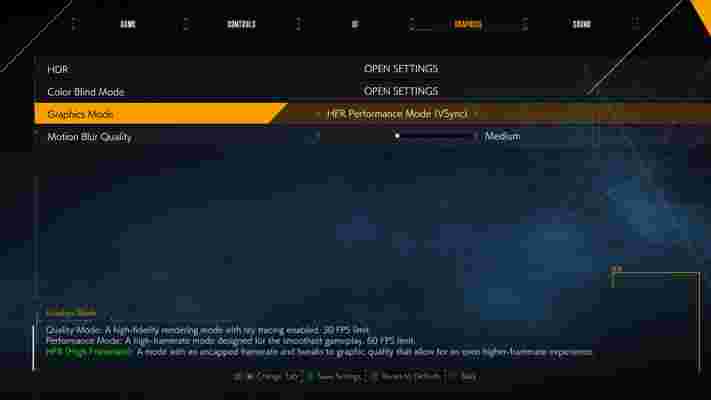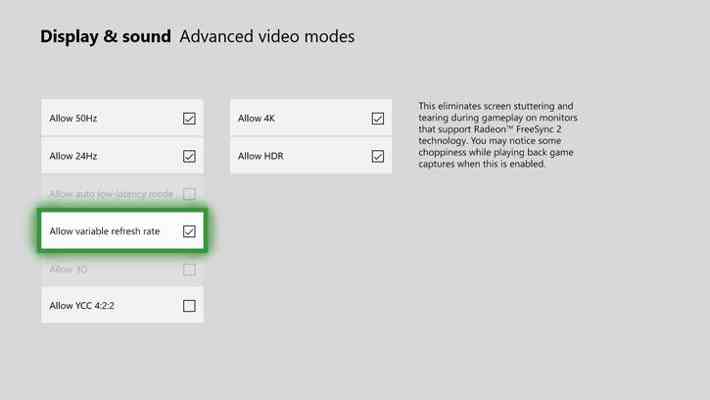If you liked the look of the OnePlus 10 Pro but not its price tag, the company now has a trio of possible alternatives for you, as it’s just announced the OnePlus 10R, the OnePlus 10R Endurance Edition, and the OnePlus Nord CE 2 Lite 5G.
The first two phones there are in most ways identical, but while the OnePlus 10R has a 5,000mAh battery with 80W charging (which can get it from 1% to 100% in 32 minutes), the OnePlus 10R Endurance Edition has a 4,500mAh battery with 150W charging, capable of getting it from 1% to 100% in just 17 minutes.
And while fast charging can sometimes also degrade a battery faster, OnePlus claims the Endurance Edition will keep 80% of its capacity after 1,600 charge cycles, which is double the industry standard.

Beyond that, both phones have a 6.7-inch 1080 x 2412 AMOLED screen with a 120Hz refresh rate, a fairly high-end MediaTek Dimensity 8100-Max chipset, 8GB or 12GB of RAM, up to 256GB of storage, a 50MP main camera, an 8MP ultrawide one, a 2MP macro one, and a 16MP front-facing one.
The phones also run Android 12 , and they will go on sale in India on May 4. Pricing and availability for other regions hasn’t yet been confirmed, but for reference the OnePlus 10R starts at INR 38,999 (roughly $510 / £405 / AU$715), while the OnePlus 10R Endurance Edition (which can only be had with 12GB of RAM and 256GB of storage) costs INR 43,999 (around $575 / £460 / AU$805).
Then there’s the OnePlus Nord CE 2 Lite 5G, which has a 6.58-inch 1080 x 2412 LCD screen with a 120Hz refresh rate, a Snapdragon 695 chipset, 128GB of storage, 6GB or 8GB of RAM, a 5,000mAh battery, 33W charging, a 64MP main camera, a 2MP macro one, a 2MP depth sensor, and a 16MP camera on the front.
It too has only so far been announced for India, where it will be sold from April 30 at a starting price of INR 19,999 (approximately $260 / £210 / AU$365).

Analysis: one phone with three names
The OnePlus 10R and the OnePlus 10R Endurance Edition have only just been announced, and yet they’ve also previously been announced – just under different names.
Not long ago we saw the OnePlus Ace unveiled in China , which is exactly the same phone as the OnePlus 10R Endurance Edition.
But even before that we saw the Realme GT Neo 3, which is again basically the same phone, and is available in both 150W and 80W versions. There’s a slight difference here though in that the GT Neo 3 has a slightly lesser Dimensity 8100 chipset, rather than the Max version.
The Realme handset also has a very different, rather racing inspired paint job. The colors that you can get the OnePlus 10R and the OnePlus Ace in also differ from one another, but the overall design is identical.
So if and when the OnePlus 10R launches elsewhere, it might not do so under that name. Here’s hoping at least that a fourth name isn’t added to the mix, because three is more than enough.
Ghostwire: Tokyo is the greatest argument yet for VRR support on PS5
Update: It seems like Sony heard our prayers, as VRR support is coming to PS5 in "the months ahead". Games will need to be patched to specifically support VRR, however, there will be an option to force VRR in all games. This could have a negative impact on some titles, though, but we're glad the option is there. Let's hope Ghostwire: Tokyo is one of the titles that will receive dedicated VRR support.
Original story: It’s starting to feel like VRR support on PS5 will never arrive, but the HDMI 2.1 display feature will continue to be top of many PlayStation users’ wishlists as it can have a substantial impact on a game's performance.
Ghostwire: Tokyo is a prime example of a game that would benefit immensely from VRR support, as it offers six graphical modes for players to choose from. The game provides two primary modes: Quality Mode, which is a high-fidelity rendering mode with ray tracing and a 30fps cap; and Performance Mode, a high-framerate mode designed for smoother gameplay with a frame rate cap of 60fps.
However, Ghostwire: Tokyo also includes four additional modes that are prone to visual issues, all of which would be far more pleasing if PS5 had VRR support. High Framerate Quality Mode and High Framerate Performance Mode remove the 30fps and 60fps frame caps but are prone to unsightly screen tearing and visible judder as a result of the wildly fluctuating frame rates.
High Framerate Quality (VSync) Mode and High Framerate Performance (VSync) Mode are the same as the previous two graphic modes but the implementation of VSync helps keep screen tearing in check. Unfortunately, though, the addition of VSync adds a noticeable amount of input lag and generally results in a lower frame rate overall than the uncapped options as it’s another overhead for the game’s engine to deal with.
The wonder of VRR

Annoyingly, as it stands there’s no “ideal” graphical mode to choose from in Ghostwire: Tokyo, as they all have their pros and cons. VRR support would help smooth over these visual issues, however, and would particularly benefit the game’s Performance Mode, High Framerate Quality Mode, and High Framerate Performance Mode. The display feature, which has been present on Xbox consoles since 2018, can eliminate screen tearing and reduce the visible impact of frame drops as VRR syncs the refresh rate to that of the console’s output, not your display.
As we point out in our VRR explainer, screen tearing and judder occurs when your TV’s refresh of its image is out-of-sync with the rate at which your console or PC graphics card delivers frames. You end up with an on-screen image that sees, for example, the top half of the screen display one frame and the bottom the next. Thus, a visible tear appears across the image, which can be incredibly distracting when gaming.
The main limitation of VRR depends on the variable refresh rate range of your display. The popular LG OLED CX has a VRR range of 40 - 120Hz, which means anytime your console is outputting a game between those frame rates, VRR will be in effect. Most PS5 games now support 60fps, and VRR can work wonders at smoothing out any little dips to a game’s frame rate that would usually be noticeable when not in use.
The wait for VRR on PS5 continues

While Sony continues to make the wait for PS5 VRR support an arduous affair, the fact that PS5 console exclusive Ghostwire: Tokyo has so many graphical options to choose from could be a subtle indication that VRR support will eventually arrive on PlayStation 5. Sony has also recently updated a number of its flagship TVs to include VRR support , so it makes sense that the company would want its console to utilize all the best display features available.
But what of the lack of 1440p support , another thorn in the PS5’s side? Those who use a monitor, many of which support VRR, are still stuck with the PlayStation 5 defaulting to 1080p, albeit downscaled. Like VRR, the Xbox One actually added 1440p support in 2018, but the feature never came to PS4 or PS4 Pro .
It remains to be seen if Sony will ever implement VRR support for PS5 in the near future, but we wouldn’t get our hopes up for 1440p output. Sony’s PlayStation hardware boss Masayasu Ito and PlayStation platform boss Hideaki Nishino have said 1440p isn’t a priority because the company wants to “prioritize support for TVs” (thanks, Eurogamer ).
For now, then, we'd recommend picking the High Framerate Performance (VSync) Mode in Ghostwire: Tokyo as it gets you the best overall performance without any nasty screen tear. If you'd prefer a more consistent frame rate or only have a 60Hz display, stick with Performance Mode.
These wireless earbuds pack ANC and superb battery life at an affordable price
Audio brand Creative has just announced its latest pair of wireless earbuds. The Creative Outlier Pro true wireless earbuds are available to buy now, and have our eyebrows raised with features like hybrid active noise cancellation and up to 60 hours of battery life thanks to the pair's sleek-looking charging case.
Announced via press release, the Creative Outlier Pro wireless earbuds can be purchased from Creative's own online store, and are surprisingly affordable, setting you back just $119 / £84.99 (around AU$159). That's an especially decent price considering the higher-end features, many of which you'll find in the best wireless earbuds you can buy today.
As mentioned, one of the standout features of the Creative Outlier Pro true wireless earbuds is the seriously impressive battery life. By default, you'll get 15 hours from a single charge, with up to 45 hours more provided by the charging case. With hybrid ANC enabled, that drops to 10 hours on a single charge, which is still quite substantial.

Big features, small price
Great battery life isn't all the Creative Outlier Pro wireless earbuds have going for them. The aforementioned hybrid active noise cancellation - according to Creative's website - has a high effective range that can block out most noise generated by traffic, pets, voices and other audible sources.
Additionally, if you're want to be a bit aware of your surroundings, the buds also feature an Ambient mode that provides a balance between having ANC on or off. This could be a great feature if you still need to keep an ear out for certain sounds, like oncoming traffic, for example.
All ANC modes, as well as customizable touch controls, can be adjusted via the Creative mobile app, too, so you won't need to fiddle with the wireless earbuds directly if you want to find the best settings to suit your needs. A high IPX5 water resistance rating should also protect the buds from sweat, rain and long term wear and tear.
Lastly, we'd like to touch on the Creative Outlier Pro wireless earbuds' form factor and design, which appear to be fairly premium for the relatively low price. Graphene-coated drivers should hopefully allow for a crisp, clear listening experience, while the charging case itself features an impressively novel design, with the side of the case sliding outwards and revealing the earbud slots within.